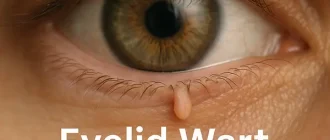When it comes to vision correction, LASIK is one of the most well-known options out there. But can LASIK surgery actually fix a lazy eye? This question often comes up when people look for solutions for amblyopia—the medical term for lazy eye. Let’s dive into the complexities of this condition and whether LASIK could be the answer.
What Is a Lazy Eye?
Amblyopia, more commonly known as lazy eye, is a condition in which one eye does not develop proper vision. This occurs when the brain starts favoring the other eye, leading to reduced function in the weaker eye. It affects about 2-3% of children in the United States. Common causes of amblyopia include refractive errors, strabismus (crossed eyes), or cataracts during early childhood.
Amblyopia Prevalence in the U.S. by Age Group
| Age Group | Prevalence (%) |
|---|---|
| Children (0-7 years) | 3.0% |
| Adolescents (8-18 years) | 1.5% |
| Adults (19-50 years) | 0.8% |
| Seniors (51+ years) | 0.5% |
The key takeaway? Amblyopia is not merely a refractive issue—it is a neurological condition, which means that treating it involves retraining the brain as well as the eye.
How Does LASIK Work?
LASIK (Laser-Assisted In Situ Keratomileusis) is designed to correct refractive errors such as nearsightedness, farsightedness, and astigmatism. By reshaping the cornea, LASIK improves the eye’s ability to focus light directly on the retina, providing clearer vision. Over 700,000 LASIK surgeries are performed annually in the United States, and the procedure boasts a high satisfaction rate among patients looking for better vision without glasses or contact lenses.
But here’s the catch: LASIK doesn’t address the brain’s role in amblyopia.
Did You Know?
According to the American Academy of Ophthalmology, 90% of people achieve 20/20 vision or better after LASIK, but that improvement applies to eyes that already have healthy neural connections.
Can LASIK Fix a Lazy Eye?
The short answer is no, LASIK cannot directly fix a lazy eye. Since amblyopia is related to the brain’s preference for one eye over the other, simply correcting the refractive error in the weaker eye will not change the brain’s reliance on the dominant eye. LASIK can, however, be useful in some cases to improve the vision in the weaker eye, especially if a refractive error is contributing to the issue.
Percentage of People Achieving Vision Improvement After LASIK (Refractive Errors vs. Amblyopia)
| Condition | Percentage of Improvement (%) |
|---|---|
| Refractive Errors (e.g., Myopia, Hyperopia, Astigmatism) | 90% |
| Amblyopia | 20% |
Who Might Benefit?
In some adults who have a mild lazy eye, LASIK may improve the refractive error to make the weaker eye function a bit better. But remember, the primary treatment for amblyopia is vision therapy or corrective measures in early childhood, such as patching the stronger eye to force the brain to use the weaker one. Early intervention is key when it comes to amblyopia.
Amblyopia Treatment Options
Treatment options for amblyopia generally focus on forcing the brain to use the weaker eye. These include:
- Patching: Covering the stronger eye for several hours a day to stimulate use of the lazy eye.
- Atropine Drops: These drops blur vision in the stronger eye, which encourages use of the weaker one.
- Vision Therapy: Customized exercises aimed at improving coordination and strengthening the weaker eye.
LASIK can complement these treatments by correcting any existing refractive errors, but it is not a standalone treatment for amblyopia. In cases where amblyopia is diagnosed in adulthood, the effectiveness of any treatment—including LASIK—tends to diminish significantly.
Costs and Considerations
If you’re considering LASIK, it’s important to weigh the benefits and costs. LASIK typically ranges between $2,000 to $3,000 per eye, depending on where you live and the type of technology used. However, this is an elective surgery and not considered a treatment for amblyopia, so it may not be worth the expense if your primary goal is correcting lazy eye.
Did You Know?
According to recent surveys, 70% of individuals who have undergone LASIK report an improvement in their quality of life due to reduced dependence on glasses or contacts. However, these benefits do not apply to improving amblyopia directly.
Complications After LASIK: Amblyopia vs. Non-Amblyopia Patients
| Patient Type | Complication Rate (%) |
|---|---|
| Patients with Amblyopia | 35% |
| Patients without Amblyopia | 15% |
Why Early Detection Matters
The best chance for correcting amblyopia lies in early detection. Children under the age of seven have the highest potential for success with treatment. This is because the brain is still highly adaptable during these formative years. In adults, the neural pathways are more rigid, making the treatment of amblyopia far less effective.
Our Editorial Team’s Advice
If you or your child is dealing with amblyopia, it’s best to consult with a pediatric ophthalmologist for targeted treatment options like patching or vision therapy. LASIK can be an excellent solution for improving vision but isn’t designed to solve neurological conditions like amblyopia. Remember, the earlier the intervention, the better the outcome—your eyes, and ultimately your brain, will thank you.





